- Reaction score
- 8,596
- Points
- 1,210
yah. that. Ugh... I was typing that and watching the Leafs game. Obviously I can't deal with a crushing abusive relationship and type at the same time.420 thousand?

yah. that. Ugh... I was typing that and watching the Leafs game. Obviously I can't deal with a crushing abusive relationship and type at the same time.420 thousand?
This is what I tell people all the time about moving there. Be prepared for the not from around here crowd. It's a maritime problem. Can't even get a job in some places if you don't have the right last name...I kept getting told to 'go back to Toronto' 15 years ago (I hate T.O. FWIW) so I don't think it's a new thing, just more pronounced.
Indeed, many people miss or ignore the advantages that long term large scale domestic investment/production can offer, it's really a value to the community and I'm not surprised that the politicians at the event relentlessly hammered that fact home. With the city growing from other investments and populations increases, the area should be doing well for decades to come.
As a bit of a Canadian history nerd, it's great to see many forgotten or underappreciated service members from the past finally get some well needed recognition. A lot of the navy's founding or important figures are lucky to get a random out of the way building or a cadet unit named after them at best. Shame this is likely the only time we will use this kind of naming scheme for awhile.
One thing I think the AOP's have over this is their ice class, these ships appear not to have any ice rating that I can find, other than ice strengthened. The AOP's on the other hand are PC 5 hull and PC 4 bow.And while we congratulate ourselves .....
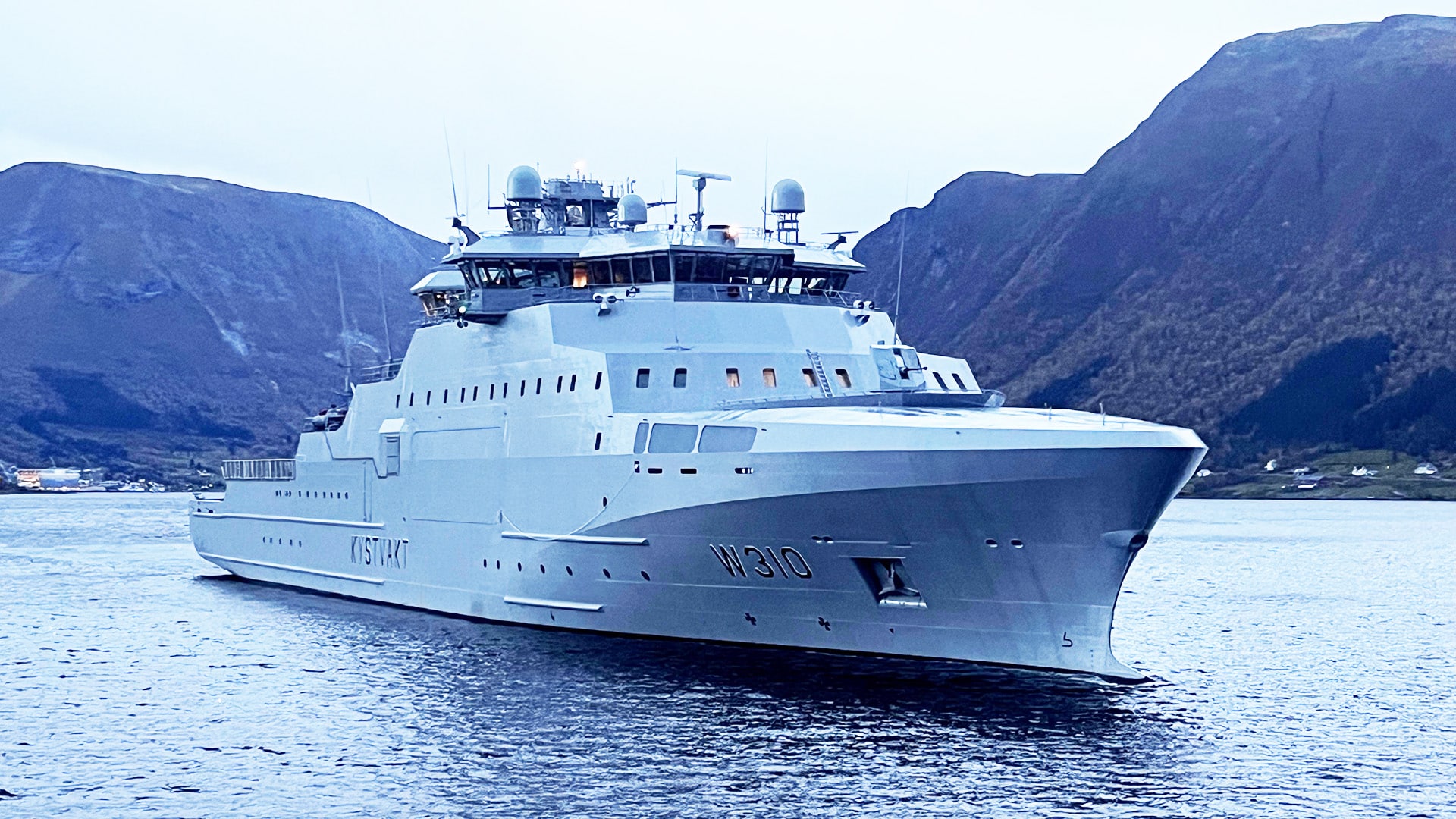
Norwegian Coast Guard christens the first Jan Mayen-class vessel - Naval News
The Norwegian Coast Guard christened the first Jan Mayen-class vessel at the Vard Langsten shipyard in Tomrefjord on October 16, 2022.www.navalnews.com
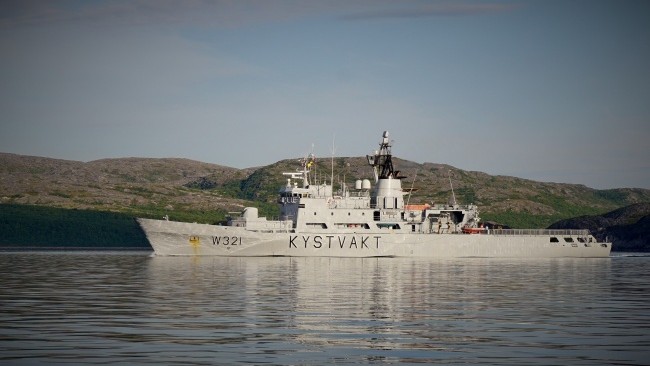
Norway's new ice-strengthened coast guard ship on the way
Vanishing sea ice gives Norway more waters to patrol. The hull for the first of three new Coast Guard ships to operate in the Arctic zone is now being towed from the shipyard in Romania. The hulls are built at Vard Tulcea shipyard in Romania, while it will be the Vard Langsten shipyard in Norwaywww.rcinet.ca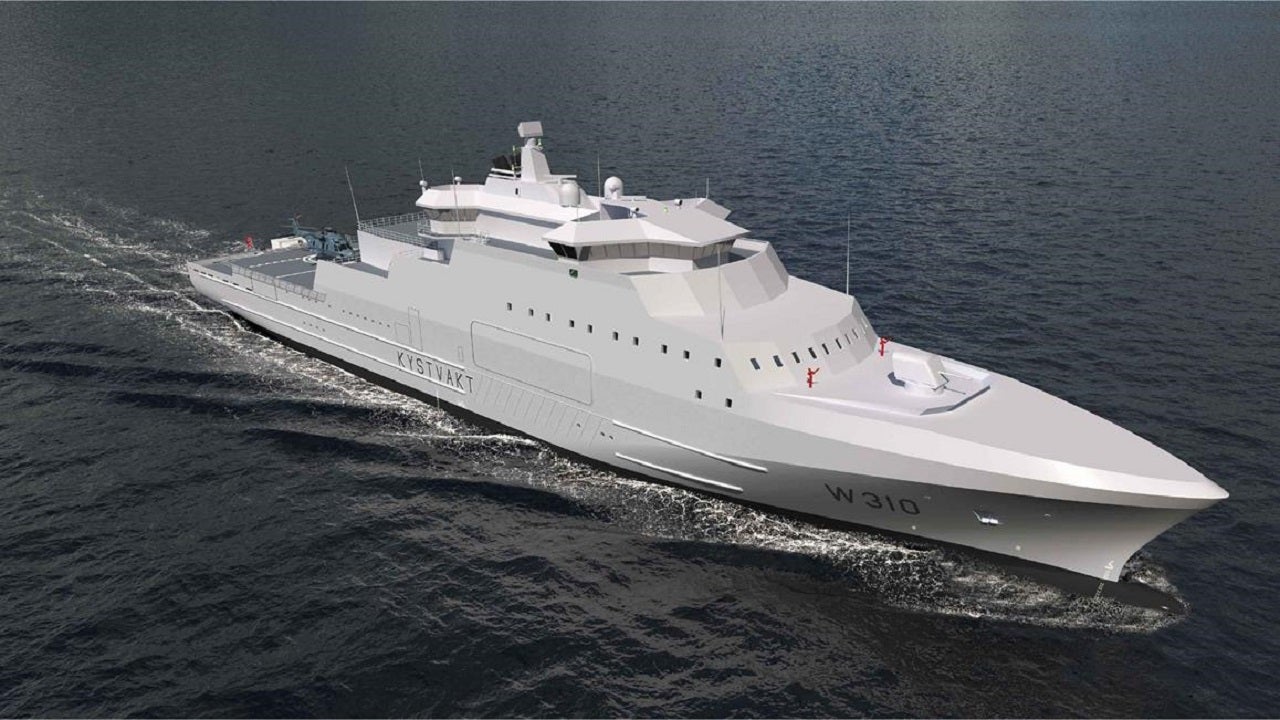
Jan Mayen-Class Vessels
The Jan Mayen-class (P6615 Project) vessels are being built by VARD Langsten shipyard in Norway for the Norwegian Coast Guard (Kystvakten).www.naval-technology.com

VESSEL REVIEW | Jan Mayen – Ice-capable patrol vessel delivered to Norwegian Coast Guard
The Norwegian Coast Guard has taken delivery of a new offshore patrol vessel (OPV). The future NoCGV Jan Mayen is the lead ship of a new class of three OPVs thawww.bairdmaritime.com
One thing I think the AOP's have over this is their ice class, these ships appear not to have any ice rating that I can find, other than ice strengthened. The AOP's on the other hand are PC 5 hull and PC 4 bow.
One thing I think the AOP's have over this is their ice class, these ships appear not to have any ice rating that I can find, other than ice strengthened. The AOP's on the other hand are PC 5 hull and PC 4 bow.
Norwegian language wikipedia page says that Jan Mayen has an ice rating of "ice class ICE-1A*F (>100 cm ice)" under the DNV-GL Finnish-Swedish Ice Class Rules.It is less the detail of the construction that intrigues me than the speed at which the Norwegians can decide, design, build, correct, repeat. And the the numbers that they can produce while our elephant belabours over a mouse.
Norwegian language wikipedia page says that Jan Mayen has an ice rating of "ice class ICE-1A*F (>100 cm ice)" under the DNV-GL Finnish-Swedish Ice Class Rules.
That appears to be roughly PC 6-7 whereas the AOPs are PC 5 with a PC 4 bow.Norwegian language wikipedia page says that Jan Mayen has an ice rating of "ice class ICE-1A*F (>100 cm ice)" under the DNV-GL Finnish-Swedish Ice Class Rules.

That is like asking why the CP-140 Aurora is so limited in it’s air to air capability.This is a little unrelated to the current topic of conversation, but does anyone know why the Harry DeWolf class is so limited in its ASW capabilities? I get it's an OPS, but it could stand to have something to counter submarines besides that helicopter.
As SeaKingTacco said, it is not the role of the AOPS to be a combatant, let alone a specialized combatant for anti-submarine warfare. They have a containerized TRAPS systems lets the ship do some limited underwater sensor work but its very much a bolt on capability that the ship has no way to effectively utilize. As far as I am aware, the ships do not have all of the equipment required to fully operate Cyclones properly and the AOPS do not have torpedo magazines, meaning you would need to refit/cludge capability onto the ship just to get some baseline usability. From what I understand as well, trying to do ASW in the Arctic can be a difficult job even for purpose built warships. At the end of the day, it is a 6,600t non-combatant designed to do patrol work inside and outside of the Arctic. It has no dedicated underwater sensor suite, it has no sound dampening aboard, can't operate Cyclones properly in its current state and is built to civilian standards. About all you can hope for AOPS to do if it encounters a submarine is cry for help and pray.This is a little unrelated to the current topic of conversation, but does anyone know why the Harry DeWolf class is so limited in its ASW capabilities? I get it's an OPS, but it could stand to have something to counter submarines besides that helicopter.
I would liken the AOPS as a Ford 650 Work truck that has a rather surprising Ice strengthened capability and carry's a robust communication suite with a shotgun at the rear of the cab. Having said that even Paul Blart had SOME success.As SeaKingTacco said, it is not the role of the AOPS to be a combatant, let alone a specialized combatant for anti-submarine warfare. They have a containerized TRAPS systems lets the ship do some limited underwater sensor work but its very much a bolt on capability that the ship has no way to effectively utilize. As far as I am aware, the ships do not have all of the equipment required to fully operate Cyclones properly and the AOPS do not have torpedo magazines, meaning you would need to refit/cludge capability onto the ship just to get some baseline usability. From what I understand as well, trying to do ASW in the Arctic can be a difficult job even for purpose built warships. At the end of the day, it is a 6,600t non-combatant designed to do patrol work inside and outside of the Arctic. It has no dedicated underwater sensor suite, it has no sound dampening aboard, can't operate Cyclones properly in its current state and is built to civilian standards. About all you can hope for AOPS to do if it encounters a submarine is cry for help and pray.
Trying to incorporate more capability for combat roles into the design (especially ASW) would have been at odds with its mission and would have actively detracted from it.
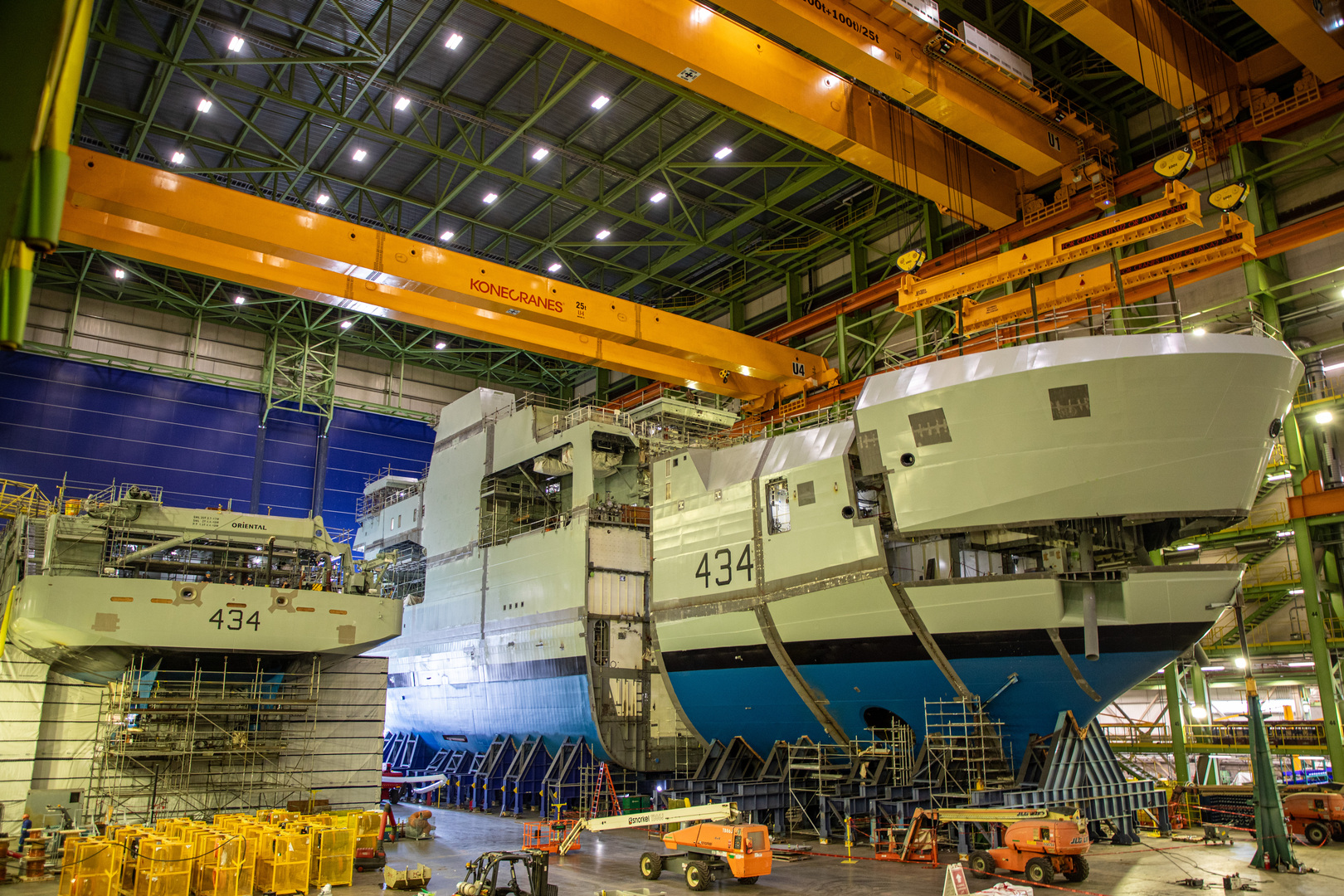
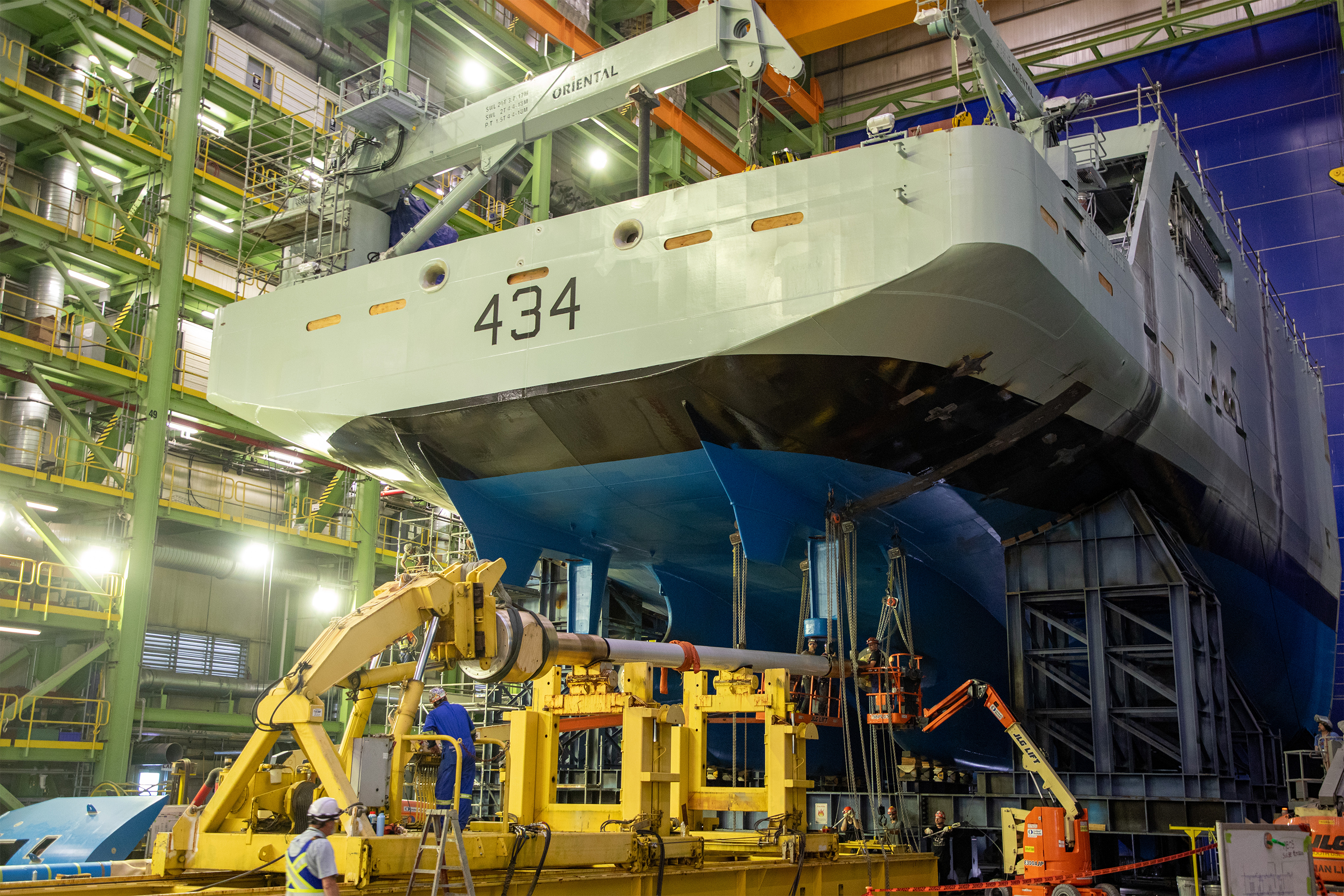
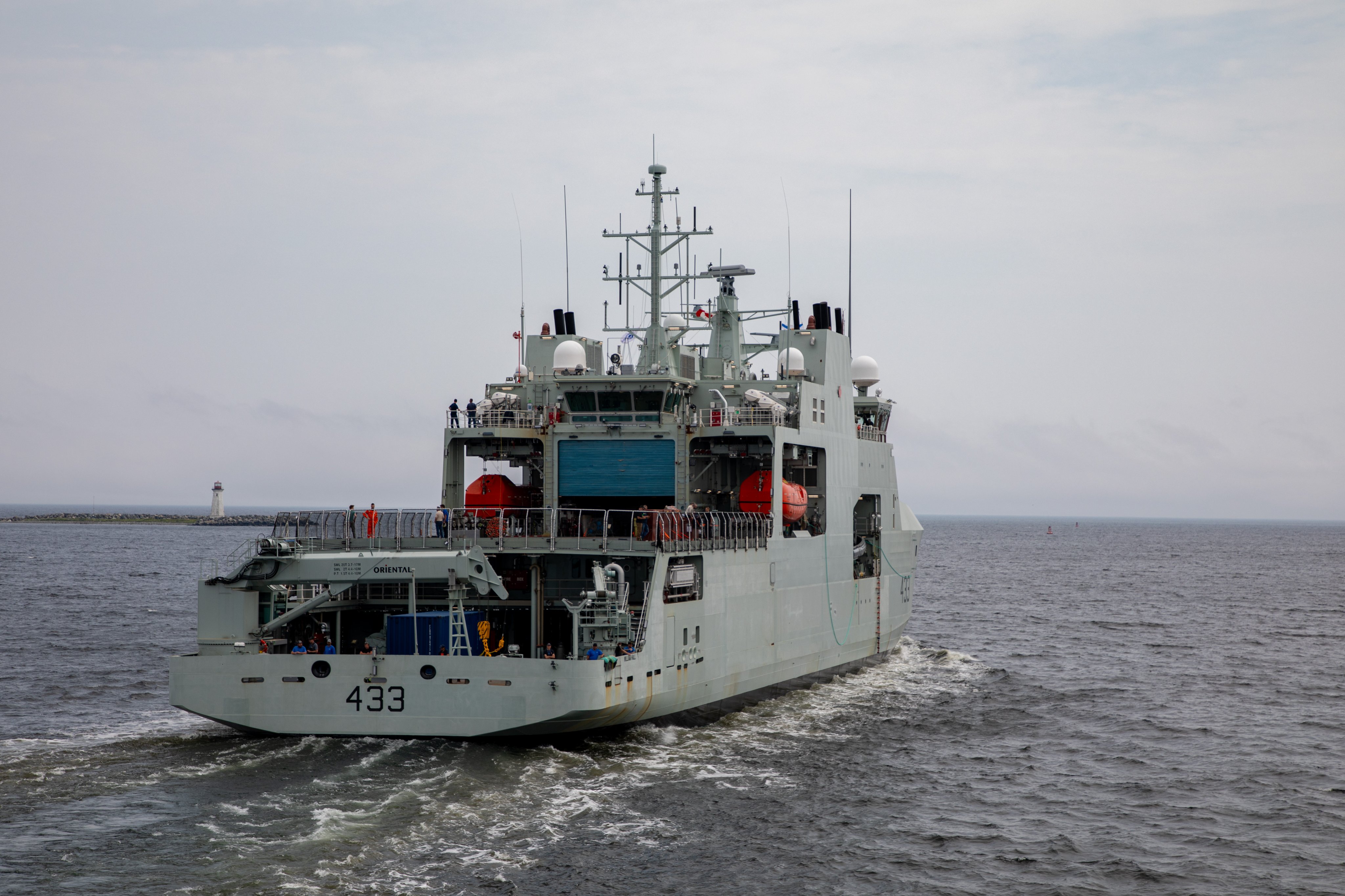
Nothing in the public register:Just an aside: Has anyone developed the ship's crest for William Hall?
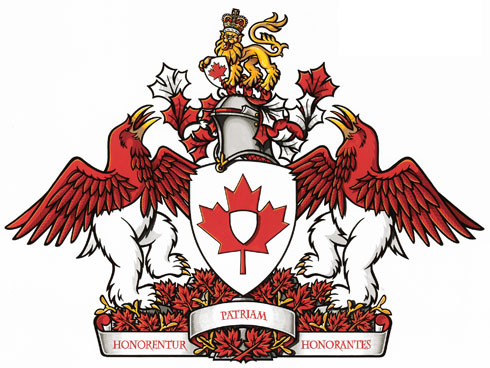
Just an aside: Has anyone developed the ship's crest for William Hall?
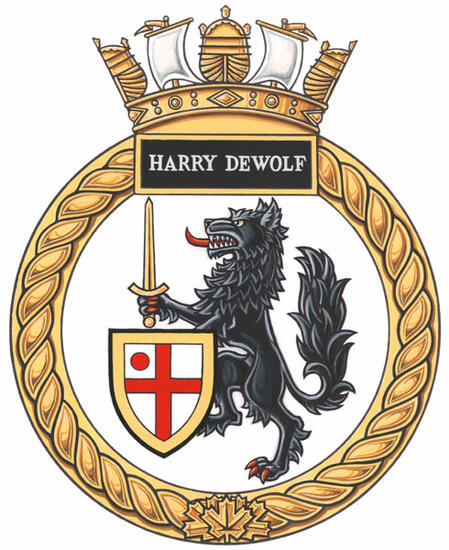
The wolf is a canting reference to the surname of Vice-Admiral Harry DeWolf (1903-2000). The sword indicates his status as an officer and a warrior. The shield evokes protection and displays the traditional insignia of a vice-admiral, a cross of St. George with a red disc in the upper left corner. The white background represents the icy waters of the Arctic.
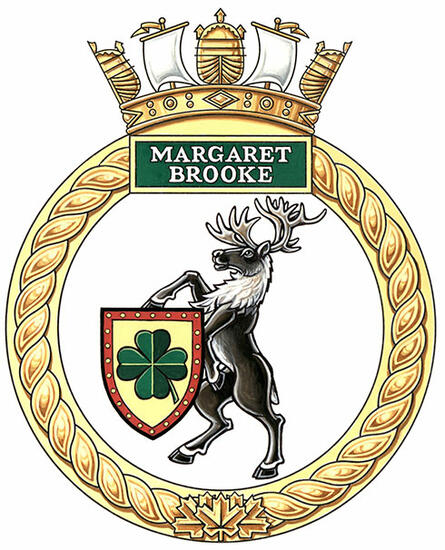
The caribou refers to the SS Caribou, the ferry on which Sub-Lieutenant Margaret Brooke, a nurse serving with the Royal Canadian Navy, was travelling when it was torpedoed by a U-Boat in 1942. Brooke was honoured for her bravery in attempting to save the life of her colleague Sub-Lieutenant Agnes Wilkie. The four-leaf clover was a good-luck charm carried by Brooke during the ordeal. The shield symbolizes protection, and its colours, green and yellow, are those of Saskatchewan, Margaret Brooke’s home province. The border of the shield alludes to the deep pink ribbon of the Order of the British Empire, of which Brooke was made a Member in recognition of her bravery. The white background refers to the Arctic environment in which HMCS Margaret Brooke will operate.
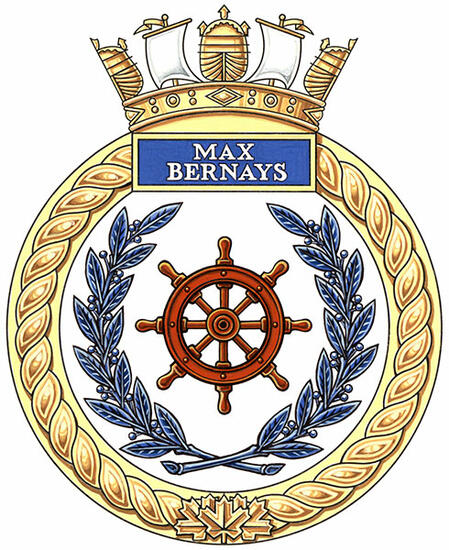
The ship’s wheel represents the courage of Acting Chief Petty Officer Max Bernays in remaining at the helm of HMCS Assiniboine while under surface gun attack by a U Boat in 1942, during which time the bridge and wheelhouse were surrounded by flames, represented here by the red colour. The laurel wreath appears in the Conspicuous Gallantry Medal awarded to Bernays, as well as in the hat badge he wore as an Acting Chief Petty Officer. The white and blue are the colours of the ribbon of the Conspicuous Gallantry Medal. The white background also refers to the Arctic environment in which HMCS Max Bernays will operate.
Hopefully it will be revealed soon, I hope Robert Hampton Gray's crest will include a F4U Corsair.
Or, even simpler, incorporate the roundel that the RN (which he was in) used.The use of the physical aircraft is a 50/50 chance in my eyes, but something alluding to the F4U might be used, like the California rockfish (AKA the corsair) which was the namesake of submarine USS Corsair (SS 435) of the Tench-class.
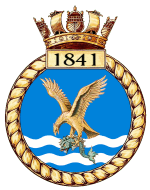
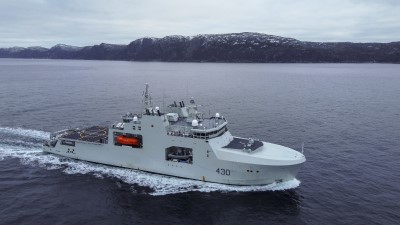
After ten months of an operational hiatus for necessary repairs and extensive sailor training, His Majesty’s Canadian Ship (HMCS) Harry DeWolf and its crew is gearing up to head out to sea in August.
“From a ship driver perspective, this drives nothing like anything I’ve driven in the last thirty years,” said the ship’s Commander (Cdr), Guillaume Côté. “It’s completely different. Everyone aboard, including myself, have to learn how to operate such a large ship.”
For Cdr Côté the most daunting feat is operating a vessel of Harry DeWolf’s size. More familiar with operating the Halifax-class frigates, Cdr Côté describes vessels like the Kingston-class Marine Coastal Defence Vessels as comparable to driving a sports car. Harry DeWolf on the other hand, weighing about 7,000 tonnes with a diesel-electric motor, drives more like an 18-wheeler.
This reality requires more Marine Technicians (MARTECH) aboard who bring a collective knowledge of the Navy’s technical trades and an openness to taking on new challenges.
“There’s an entire development process to change the skillsets of every single sailor serving in this ship,” Cdr Côté said. “They have to take what they have learned or what they know and apply it in a different way.”
Until mid-July the crew of 87 sailors was focused solely on training, earning qualifications, and gaining experience to be best prepared for future deployments.
Despite the lengthy training for personnel, Cdr Côté himself is bracing for the new adventure of sailing in the arctic.
“It’s a daunting task, sailing that farup North. I’m not too sure how to prepare myself emotionally, psychologically, operationally for this,” he said. “This is going to be a complete change.”
The upcoming deployment on Operation Nanook is an exercise of Canadian sovereignty in the arctic region. It’s a joint effort coordinated with our northern partners that helps respond to security issues in the North. Cdr Côté says Harry DeWolf will be the only Canadian navy vessel participating in the operation this year, collaborating, and conducting exercises with the Canadian Coast Guard, the United States Navy, the United States Coast Guard, and other national and international partners to improve the Navy’s ability to operate in the unique environment.
Cdr Côté also noted this operation is not only important to demonstrate Canada’s presence in our territorial waters, but for sailors to experience sailing in the arctic.
“The Royal Canadian Navy (RCN) has limited knowledge and experience in our own backyard,” said Cdr Côté. “So, every time we go up there, we learn new things.”
The significance of Harry DeWolf’s presence in more isolated regions and untouched natural environments is not lost on the ship’s Commanding Officer or ships company. He says climate change is top of mind and they are all prepared to uphold the RCN’s mandate to reduce environmental impacts.
“With climate change things are constantly shifting,” he said. “What was once rock is just mud, coastlines are changing with erosion, so there’s a bit of survey work, but we are a self-sustaining unit. We are trying to have as little negative impact on the local communities, and on the environment.”
Beyond the challenges that Op Nanook may bring, Cdr Côté is eager to head out to sea with his skilled and talented crew.
“We’re just starting this journey of discovery and we are really looking forward to that challenge,” he said. “Over.”


